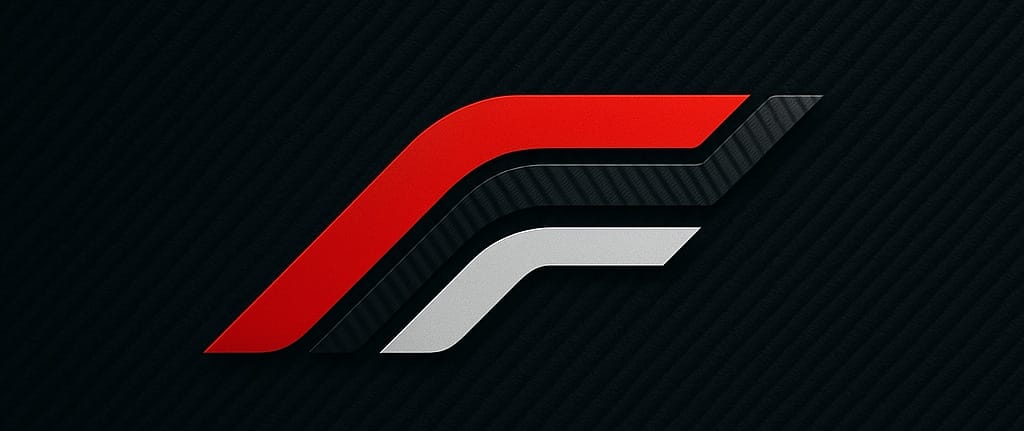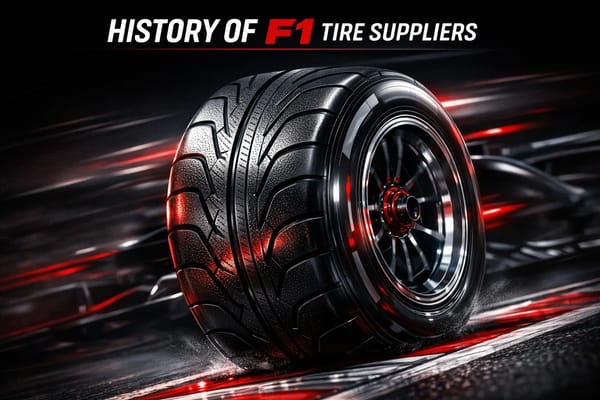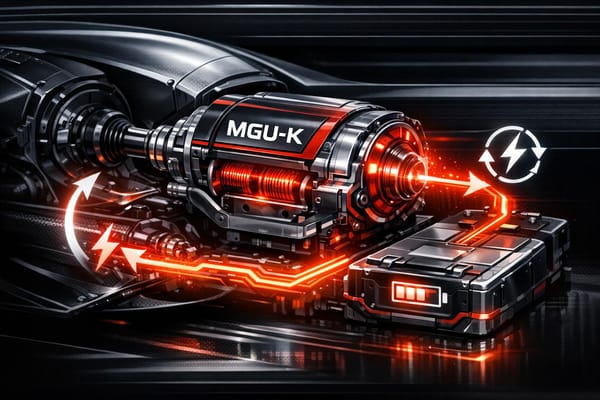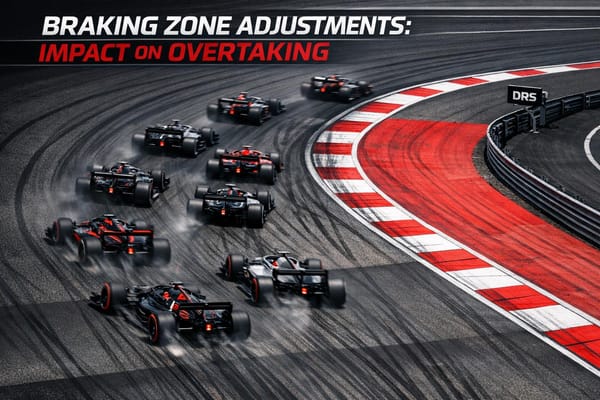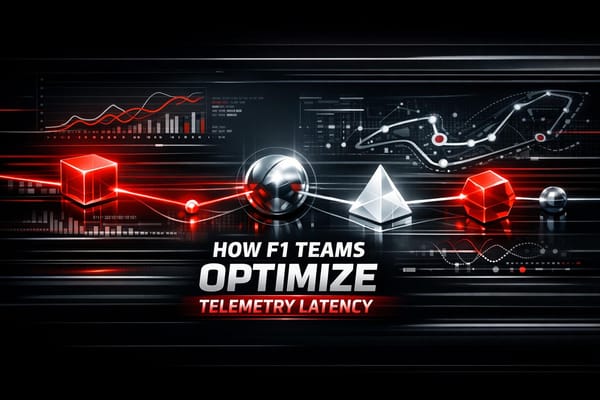How Social Media Shapes F1 Driver Personas
Explore how social media transforms F1 drivers into global icons, impacting their careers, sponsorships, and fan engagement.
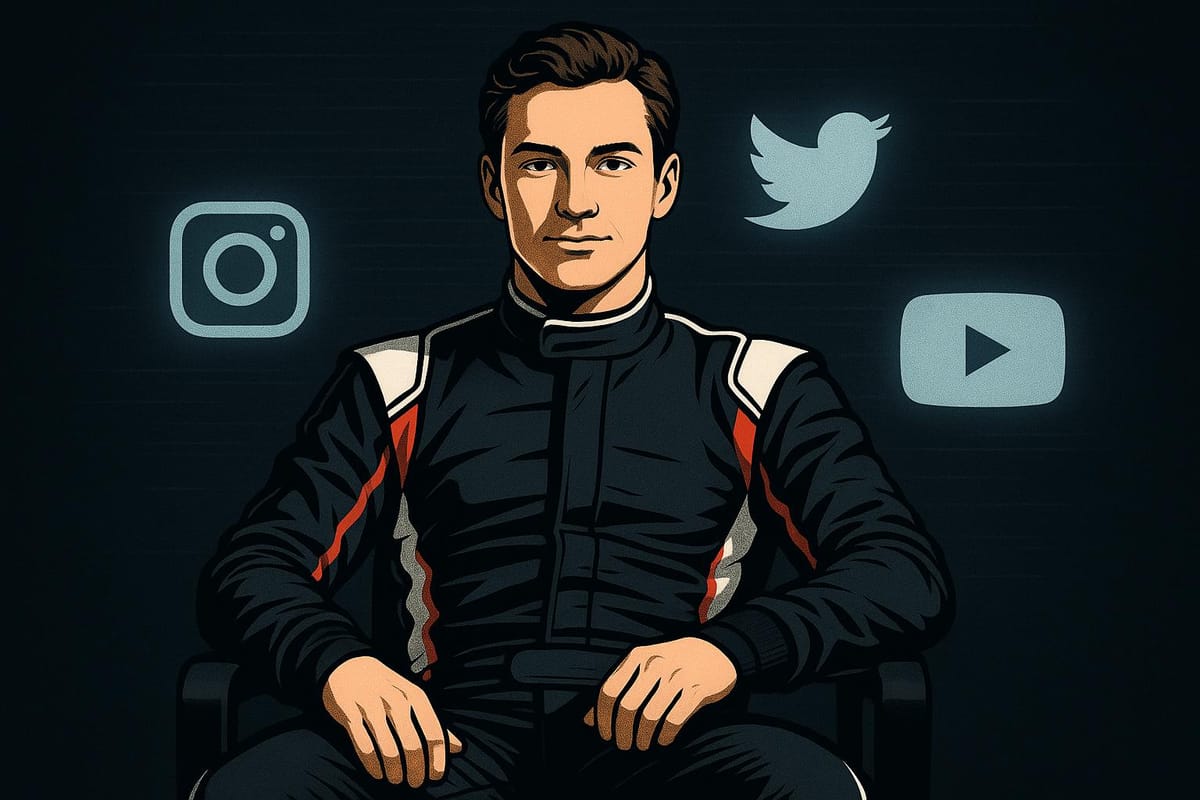
Formula One drivers are no longer just athletes - they're now public figures who connect with millions through social media. Platforms like Instagram, TikTok, and YouTube have transformed how drivers engage with fans, offering behind-the-scenes insights, personal stories, and real-time updates. This shift has made social media a critical tool for building their public image, attracting sponsors, and growing the sport's global audience.
Key takeaways:
- Fan Engagement: Drivers share personal moments, race insights, and hobbies to connect with diverse audiences.
- Sponsorship Impact: Teams and sponsors prioritize drivers with high follower counts and engagement.
- Platform Strategies: Instagram and TikTok thrive on visual and short-form content, while YouTube allows for longer storytelling.
- Challenges: Drivers face constant pressure to create content, manage criticism, and balance racing with their online presence.
Social media is now integral to an F1 driver's career, shaping their image and influencing their success both on and off the track.
Ranking F1 Drivers' Social Media
Building a Public Image: From Driver to Global Icon
In today's world, being a Formula 1 driver involves much more than just excelling on the track. Modern drivers have evolved into global icons by carefully shaping their online presence. Success in racing alone no longer guarantees long-term recognition or marketability.
The most savvy drivers use social media as a tool to tell their own stories, bypassing traditional media. By sharing unfiltered moments from their lives, they connect directly with millions of fans, creating bonds that feel personal and real. This approach not only strengthens their public image but also allows them to share relatable stories that humanize them.
Sharing Personal Stories and Behind-the-Scenes Content
Drivers are increasingly pulling back the curtain on their lives, showcasing moments beyond the racetrack to build deeper emotional connections with fans. These glimpses into their routines often resonate more than polished, corporate-style content.
Take Lewis Hamilton, for example. On Instagram, he shares snippets of his pre-race meditation rituals and post-race celebrations. Beyond racing, his posts highlight his interests in fashion, environmental causes, and social activism, which help him connect with a broader audience.
Max Verstappen, with 18.2 million Instagram followers, offers a different angle. He shares technical breakdowns of racing strategies and streams his gaming sessions, which particularly appeal to younger fans who admire his competitive energy.
Unscripted, authentic clips - like a post-race reaction or a lighthearted moment - often outperform polished promotional videos. Platforms like Instagram Reels, TikTok, and YouTube allow drivers to showcase their personalities in a dynamic, engaging way.
Creating Content for Broader Appeal
Beyond behind-the-scenes glimpses, drivers are also creating content that taps into broader cultural trends. Lando Norris, for instance, connects with digitally savvy fans by combining gaming streams with humor, blending the worlds of sport and entertainment.
Charles Leclerc has embraced the "day-in-the-life" format, using TikTok to share his love for chess and other personal hobbies. These relatable moments help fans see him as more than just a racer, breaking down the barriers between celebrity and audience.
Then there’s Fernando Alonso, who has leaned into viral trends with a playful attitude. By humorously addressing dating rumors, he generated over 111 million TikTok views during the 2023 season. These moments show how embracing pop culture can dramatically boost a driver's visibility.
In May 2025, @redbullracing posted an Instagram video of Max Verstappen and Yuki Tsunoda sharing a candid laugh behind the scenes. The post earned over 640,000 likes, proving just how powerful authentic, personality-driven content can be.
Drivers are also tailoring their content to fit the strengths of each platform. Instagram is ideal for visual storytelling and lifestyle updates, Twitter allows for real-time race insights and fan engagement, TikTok thrives on humor and challenges, and YouTube offers space for longer, documentary-style content. Collaborations with brands and influencers amplify this reach. For example, during the 2025 Miami Grand Prix, LEGO partnered with F1 drivers to showcase life-sized car builds and fun parade moments. This campaign drew over 16 million engagements, seamlessly blending drivers into playful, relatable content.
This evolution from raw, candid moments to carefully curated, trend-aware content shows how drivers are using every available tool to build their personal brands. Today, success requires not just racing talent but also a sharp understanding of digital platforms, pop culture, and audience engagement. Those who master this balance create a legacy that goes far beyond the track, ensuring their influence lasts for years to come.
How Social Media Affects Driver Popularity and Sponsorships
In today's Formula 1 world, social media isn't just a side note - it's a driving force behind financial success. Sponsors now look beyond lap times, focusing instead on how well drivers can connect with millions of fans online. This shift has transformed the sport, making digital marketing skills nearly as essential as racing talent. Metrics like follower count and engagement rates have become critical for both sponsors and teams.
Take Lewis Hamilton, for example. With 35 million Instagram followers and 7.8 million Twitter followers, he's not just a racing icon but a digital powerhouse. His massive reach has attracted partnerships with fashion and sustainability brands, extending his influence far beyond traditional motorsport sponsors. Similarly, Max Verstappen boasts 18.2 million Instagram followers and 3.4 million Twitter followers, making him a key figure in Red Bull Racing's marketing efforts, especially among younger, tech-savvy audiences.
The Business of Social Media Followers
In Formula 1, social media metrics have become a form of currency. Teams and sponsors now rely on advanced analytics to assess a driver's digital value, taking into account follower numbers, engagement rates, and the diversity of platforms they use.
Drivers like Lando Norris stand out for their ability to connect with fans in unique ways. By mixing gaming streams with humor, Norris reaches digital-native audiences, offering sponsors a chance to extend their brand messages far beyond race weekends. The equation is simple: higher engagement leads to higher earning potential. Drivers with strong social media influence can command top dollar for sponsored posts, product placements, and brand partnerships. Their online presence also makes them more appealing to teams, often influencing career opportunities and contract negotiations.
Balancing Real Connection with Commercial Interests
However, it's not just about the numbers. Drivers must strike a delicate balance between commercial content and genuine fan interaction. Overloading followers with ads can hurt engagement and credibility, while sharing too much personal content might not align with sponsor expectations. The most successful drivers seamlessly weave sponsor promotions into their personal stories, ensuring the content feels authentic rather than forced. Timing also matters - too many ads in quick succession can alienate fans, while a well-placed promotion can enhance trust and engagement.
Different platforms require different approaches. Instagram works best for visual storytelling and lifestyle content, TikTok thrives on short, viral videos, and Twitter is ideal for real-time conversations with fans. Drivers who tailor their content to each platform's strengths are more likely to succeed without appearing repetitive or insincere.
Many drivers now work with specialized agencies to manage their social media strategies. These agencies help optimize monetization while maintaining authenticity, using data analytics to track what works and refine campaigns.
As social media's role in Formula 1 continues to grow, so do the opportunities - and the stakes. Drivers who can balance authentic fan engagement with commercial appeal are positioning themselves for success both on and off the track. On the other hand, those who fail to adapt risk losing out on sponsorship deals and team interest in an increasingly digital world. The modern Formula 1 driver isn't just a racer; they're also a content creator, blending skill behind the wheel with the ability to connect and influence online.
Challenges in Managing a Social Media Image
Social media has opened up incredible opportunities for F1 drivers, but it also brings unique challenges that add to the pressures of their careers. Unlike traditional media, which operates on a schedule, social media is a 24/7 arena. This constant exposure means drivers must juggle the demands of their online presence with the intense focus required for racing.
Every post is subject to scrutiny, and a single misstep can lead to controversies that may harm relationships with sponsors, teams, and fans. The mental strain of maintaining a public image under such conditions has prompted many drivers to seek psychological support and adopt strategies to protect their well-being while staying active online.
Handling Criticism and Online Trolls
The darker side of social media fame can hit F1 drivers hard. With millions of followers, they often become targets for negative comments, personal attacks, and even coordinated trolling. Lewis Hamilton, with 35 million Instagram followers, frequently faces criticism over his racing decisions, lifestyle, and activism. He addresses this by staying authentic in his interactions. Lando Norris has spoken openly about the toll online negativity takes on his mental health, occasionally stepping away from social media, while Sebastian Vettel avoids much of the noise by keeping his digital presence minimal.
To combat online harassment, many drivers use a mix of tech tools and personal strategies. Features like automated moderation filters and blocking tools help curb negativity, while crisis management plans address more serious issues. However, the real challenge lies in separating genuine feedback from harmful trolling - something that comes with experience.
Jacques Heckstall-Smith, who manages Alex Albon, emphasizes that while social media engagement is "non-negotiable" for today’s drivers, setting boundaries to protect mental health is just as important for long-term success.
But handling negativity is only one part of the equation. Drivers also face the challenge of managing their time effectively.
Time Management and Racing Priorities
Balancing social media and racing is no small task. On top of dealing with criticism, drivers must navigate tight schedules packed with training, race preparation, and travel. Creating engaging content can take up several hours each week, often requiring the help of professional teams or managers.
Each platform demands a tailored approach: Instagram thrives on visually compelling posts, Twitter focuses on real-time conversations, and TikTok rewards short, attention-grabbing videos. Managing these diverse requirements while staying consistent across platforms is a time-consuming effort. Many drivers rely on specialized teams to handle tasks like scheduling posts, tracking engagement metrics, and managing routine interactions. However, even with support, it’s crucial that the content feels personal and reflects the driver’s authentic voice.
This balancing act becomes particularly intense during race weekends. Drivers must stay fully focused on qualifying and race performance, yet these are also the moments when fans expect the most updates. Sharing content during such high-stakes times can be a significant drain on their energy.
Social media isn’t just about connecting with fans - it directly influences sponsorship opportunities and career growth. As a result, drivers treat it as a critical part of their professional strategy, investing in planning and support systems to ensure they can manage it effectively without compromising their focus on the track.
For readers of F1 Briefing, more detailed insights into these challenges are available.
The Future of Social Media in F1
The world of social media is changing fast, and F1 drivers need to keep up if they want to stay connected with their fans. As platforms evolve, so do the ways drivers shape their public image and interact with followers. With younger audiences driving much of the digital growth, those who embrace new platforms and technologies can strengthen their personal brands and even attract sponsorships.
New Platforms and Technologies
Many F1 drivers are now using Threads, Meta's alternative to Twitter, to connect with fans in fresh ways. This platform offers a text-based approach, striking a balance between rapid updates and visually engaging posts. Meanwhile, AI tools are helping drivers streamline content scheduling and analyze engagement data, though maintaining a genuine voice remains critical. Virtual reality is also stepping into the spotlight, offering fans immersive experiences like riding along for a lap or participating in simulator sessions. On platforms like Instagram and TikTok, improved live-streaming features allow drivers to host real-time Q&A sessions and share behind-the-scenes moments with high-quality video.
Fans tend to gravitate toward authenticity, and drivers who combine advanced technology with a personal touch are building stronger, more loyal followings. By experimenting with these new tools, they’re finding innovative ways to connect with their audience.
Social Media Integration in F1's Broader System
As technology transforms content creation, F1 as a whole is adjusting its marketing strategies. A driver’s social media presence now plays a direct role in the sport’s global reach. Teams are increasingly relying on social media analytics to attract sponsors and assess commercial opportunities. Tools like Blinkfire Trends have become staples for many teams, helping them track trending content and refine their digital strategies in real time. For example, during the 2025 Australian Grand Prix, Formula 1's official social media accounts generated over 56.7 million interactions by leveraging and amplifying posts from drivers.
Drivers are also repurposing key race moments across multiple platforms to maximize their reach. Podium celebrations, for instance, become Instagram reels, TikTok clips, tweets, and even podcast discussions, ensuring a unified message across channels. Sponsorships are evolving too, with brands collaborating with drivers to create content that naturally integrates their products, making these partnerships feel more relatable to fans.
The connection between driver personas and F1’s marketing strategies is growing stronger. With social media attracting younger, tech-savvy fans, drivers who align their personal brands with team and sport-wide initiatives are becoming indispensable both on and off the track.
Jacques Heckstall-Smith highlights the growing importance of social media in a driver’s career, stating that a consistent online presence and engaging content are essential for making the most of these platforms.
In today’s F1, drivers’ personalities are a key part of the sport’s marketing machine, and social media is the main link between their individual brands and the sport’s broader commercial goals.
Conclusion: Social Media as a Driving Force in F1
As discussed earlier, social media has completely reshaped the world of Formula One, turning drivers into relatable, influential personalities. What once served as a simple tool for updates has grown into a platform that impacts careers, sponsorship deals, and the sport's global reach.
Take the Australian Grand Prix as an example - it saw massive engagement on social media. Similarly, drivers like Lewis Hamilton share behind-the-scenes glimpses that go beyond the traditional TV broadcast, creating deeper connections with fans.
Jacques Heckstall-Smith, manager of Alex Albon, puts it plainly: social media is now "non-negotiable" for drivers.
The business side of F1 has also evolved. Teams and sponsors now factor in a driver's social media reach and engagement when assessing their value. Success is no longer just about lap times or podium finishes - connecting with millions of fans online has become just as important.
That said, navigating this digital world isn't without its challenges. Drivers have to strike a delicate balance between being authentic and maintaining their privacy. They also face online criticism and the constant pressure to create content, all while focusing on their primary job: racing. Many tackle these hurdles by working with professionals who help them manage their online presence while staying true to their personalities. Mastering this balancing act is crucial for future success.
Looking ahead, the opportunities are immense. Gen Z's digital-first habits align perfectly with F1's social media strategies, paving the way for sustained growth. As new platforms and technologies emerge, drivers who embrace these innovations while keeping their fan connections genuine will not only advance their own careers but also shape the future of Formula One.
Today’s F1 drivers are more than just athletes - they’re digital trailblazers. By excelling both on the track and online, they redefine what it means to succeed in the sport, influencing its direction with every post, story, and video.
FAQs
How do Formula 1 drivers manage their social media presence while focusing on racing?
Formula 1 drivers juggle their social media presence alongside their racing careers by weaving it into their routines and staying true to who they are. Platforms like Instagram and Twitter give them a chance to connect with fans, build their personal image, and share behind-the-scenes glimpses of their lives. However, it takes careful planning to ensure these activities don’t interfere with their main focus - racing.
To strike this balance, many drivers rely on professional teams to manage their accounts. This approach helps them maintain a steady stream of content without letting it eat into their training or track performance. Social media also serves as a space where drivers can showcase their personalities and interact with the global F1 community, all while keeping their eyes on the ultimate prize: delivering top-notch results on the circuit.
How does social media help F1 drivers secure sponsorships?
Social media has become a powerful tool for F1 drivers to build their personal brand and attract sponsorships. Platforms like Instagram, X (formerly Twitter), and TikTok give drivers the chance to share glimpses of their personalities, daily lives, and behind-the-scenes moments. This not only helps them connect with fans on a deeper level but also makes them more appealing to sponsors.
For sponsors, a driver's strong online presence is a major asset. It boosts their visibility and engagement with audiences around the world. When drivers maintain an active and genuine social media strategy, they showcase their ability to influence and reach large audiences - qualities that brands look for when deciding on sponsorship deals.
How do F1 drivers manage criticism and negative feedback on social media?
F1 drivers frequently find themselves under the microscope on social media, but many turn this challenge into an opportunity to connect with their fans. While managing criticism can be tricky, drivers often take different approaches - some address negative feedback head-on to clear up misunderstandings, while others choose to ignore it entirely, staying focused on their performance. Many also enlist professional teams to keep an eye on and manage their online presence.
To cultivate a positive image, drivers often share behind-the-scenes glimpses of their lives, engage directly with fans, and showcase their personal hobbies and interests. This strategy not only makes them more relatable but also helps foster a supportive online community, reducing the weight of negativity.
